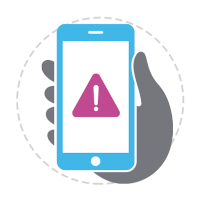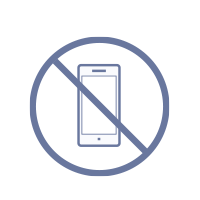Limit entertainment screen time to no more than one or two hours per day
Entertainment screen time: Know the health risks
 When you’re not in school or doing homework, how much time do you spend watching TV or YouTube videos, playing video games, texting with friends, or browsing social media? This is what we call entertainment screen time. While some screen time can be balanced with other activities — like sleep, outdoor play, exercise, and family meal time — too much is not good for you. Check out some reasons why in the slides below.
When you’re not in school or doing homework, how much time do you spend watching TV or YouTube videos, playing video games, texting with friends, or browsing social media? This is what we call entertainment screen time. While some screen time can be balanced with other activities — like sleep, outdoor play, exercise, and family meal time — too much is not good for you. Check out some reasons why in the slides below.
Food ads
Food advertisers go to great lengths to market products to children, including through TV commercials, websites, and social media. Many of these foods are high in added sugar and other unhealthy ingredients. And when you watch the ads, you’re more likely to beg your family to buy those things.
Mindless eating
Watching TV and snacking often go hand-in-hand – who doesn’t enjoy popcorn and a movie? But when you’re paying attention to what’s happening on the screen, you’re not paying attention to what or how much you’re eating. This can lead to overeating and weight gain.
More sedentary time
Hello, binge-watching. It can be really hard to walk away after just one episode or video, especially when the next one plays automatically. Before you know it, you’ve been sitting in one place for hours, not moving at all.
Poor fitness
The more time you spend sitting in front of a screen, the less time you have to play sports, ride your bike with a friend, and do other fun physical activities. Without exercise, your risk for health problems increases.
Trouble sleeping
Spending more hours on screens leaves fewer hours for sleep. Also, the glare from electronic devices can decrease your brain’s sleep hormone, melatonin, and make it harder to fall asleep at night. It’s important to power down screens at least 30 minutes before bedtime.
Strategies to turn off electronic media
In a world of instant downloads, technology, and touchscreens, it’s important to find a balance. Screens are everywhere, but it is possible to step away. When you set screen-time limits, you know you’ll have enough time to get outside, spend time with friends and loved ones in person, and get enough sleep — activities that will help you feel happy and healthy. It’s especially good to have a screen-time plan during weekends, holidays, and school vacations when you have more free time.

Make a daily or weekly screen time schedule.
Plan when you will allow yourself entertainment screen time. Maybe it’s 60 minutes after school, or only on certain days. Some families choose to limit TV to weekends when it doesn’t interfere with homework or getting to bed on time. Keep within the recommended limit of no more than one or two hours per day. Many phones, tablets, and gaming systems have ways to track and limit screen time, so take advantage of those tools.

Set a timer to limit how much time you spend in front of a screen.
Once the timer goes off, get up and do something else: learn, play, create!

Plan a non-food reward for powering down electronic devices.
Give yourself something to look forward to when you disconnect. For example, after playing a video game for up to 30 minutes, you could meet up with a friend to do a Boston Children’s fit kit Step Challenge.

Sign up for a sports league, dance or exercise class, or hiking club.
It is easier to step away from the screen when you have to be somewhere at a certain time.

Write a list of screen-free activities.
Think of creative projects, local adventures, or games you’ve been wanting to do or never tried. Keep this list in a visible place — maybe next to the TV. You will be more likely to do something else if you have thought of options ahead of time.

Turn commercial breaks into active breaks.
Do quick bursts of high-intensity exercises like jumping jacks, push-ups, high knees, or squats. These require no equipment and you may be able to do them in the same room as your TV.

Be aware.
If you find yourself staring blankly at the TV or screen, ask yourself how long you’ve been there. You may be surprised at how much time slipped away. Time to go find other things you enjoy! To increase awareness, do an experiment where you track your screen time to see how long you’re spending plugged in. Use the My Sedentary Time Tracker for the experiment.

Put your phone where you can’t see it.
Stash your phone in a drawer, backpack, or another room where it is hidden from sight for set periods of time. Then you won’t be so tempted to use it.

Make meal times screen-free.
Encourage your family to shut off the TV and not allow text messaging or browsing social media while you’re eating.

Involve your family.
Challenge each other to delete certain apps you tend to use a lot, or set specific screen-free hours, or even screen-free days. Have a competition to see who can go the longest without checking their phone.
 Come up with your own turn off plan to limit entertainment screen time. Download the worksheet
Come up with your own turn off plan to limit entertainment screen time. Download the worksheet
 People who use trackers are more likely to limit sitting-around and entertainment screen time. Try it! Download the tracker
People who use trackers are more likely to limit sitting-around and entertainment screen time. Try it! Download the tracker
